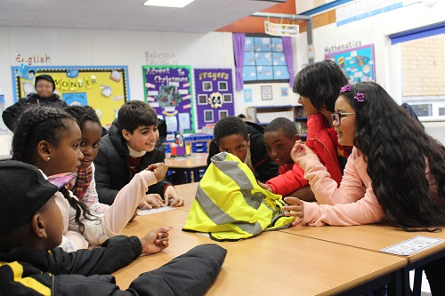This September marked 24 years since I qualified as Secondary English teacher and as, usual, the start of the new school year brought with it a period of nostalgia and reflection for me. What a a year we are living through with life unfolding in a way that none of us could have predicted.
Usually, there is an annual rhythm to my life as an Education consultant and the end of August/ start of September is typically one of my busiest periods. It is always such a thrill and a privilege to be invited to lead the key inset days at the start of the year. This year I was still invited in, but nothing was the same.
In the school halls, the desks were meticulously spaced out, the sessions started late as Headteachers worked their way through lengthy health and safety protocols and we all shivered in the breeze as every window and door was propped open. The usual effusive greetings and hugs as teachers greeted each other were notable for their absence. The sharp scent of antibacterial gel accompanied me everywhere I went. It may have been September, but it was unlike any other we have known before.
One of the things that struck me most forcibly as I stood in front of teachers on that first day was how obviously nervous we all were. In my case, as an asthmatic, it was the first time that I had been inside a room with anyone other than my family for months, yet there we all were.
As the session unfolded and teachers began to find their voices and to throw themselves into my socially distanced activities, I was reminded once again of just how resilient and adaptive teachers are. After our hesitant start, the day was characterised by a real sense of purpose and a ‘can do’ attitude. When we considered the reality of lockdown for some children, I was genuinely moved by the passion of the teachers as they described their aspirations for their pupils in the coming days and weeks. In answer to my question, ‘What do you want your pupils to feel in your classroom when they return?’ the hall rang out with teacher voices. The list went something like this: happiness, safety, joy, warmth, inspiration and – my favourite answer – ‘like this is the best part of their childhood, somewhere they really want to be’.
During the coffee break, I reflected on Sir John Jones’ phrase: that teachers are the ‘magic weaving profession’, changing lives one lesson at a time. Never has that seemed more true than it does now.
Since September, I have continued to work with many schools to help them adapt teaching and learning in light of the new Covid restrictions. Interestingly, teachers from all over the world have been asking me the same questions :
- How can I quickly figure out where the learning gaps are?
- How can I possibly support all these pupils with such different needs at the same time?
- How can I keep pupils engaged and focused all day now that they can’t move around as freely?
- How can I physically help my pupils whilst keeping them, and me, safe?
- How do I know when is the right time to press on with new learning when there are so many gaps from last year?
These pressing questions led me to develop my ‘Closing the Learning Gap’ online training course which is packed with practical strategies for teachers.
In the meantime, I hope that these quick tips will be helpful to you.
- It is easy to feel almost paralysed by what is no longer allowed within bubbles etc. This can feel disheartening and overwhelm us: as one teacher said to be recently, “It feels like I’m teaching with my hands tied behind my back. Nothing feels natural”. Instead, try to concentrate your efforts on the things that you can control. Focus on the class full of pupils who, now more than ever, need their teacher to bring the curriculum to life, to help them fall in love with learning again. Consider where the emotional hook in the lesson is and how you might exploit this even more fully. In the words of the late, great Maya Angelou, ‘People will forget what you say and forget what you do, but they will never forget the way that you make them feel’. An example from my team-teaching this week included the addition of a 5-minute starter where we looked at the shortlisted photos from the Wildlife Photographer of the Year competition and challenged pupils to guess the winning entry and justify their choice. We used this as a precursor to a potentially dry lesson on non-chronological reports. Minimal preparation but much improved buy-in from the pupils = happy days.

- Pupils spend approximately 10,500 hours in the classroom. In this period where we cannot be as spontaneous as usual, think about how you could use your physical classroom environment to surprise, challenge and genuinely engage your learners more. Look at the photo below and notice how engaged the pupils are simply because we have tweaked an existing display and this strategy is easily adapted for learners of any age.

See ‘Dynamically Different Classrooms’ by Claire Gadsby and Jan Evans for more ideas for activating your learning environment.
